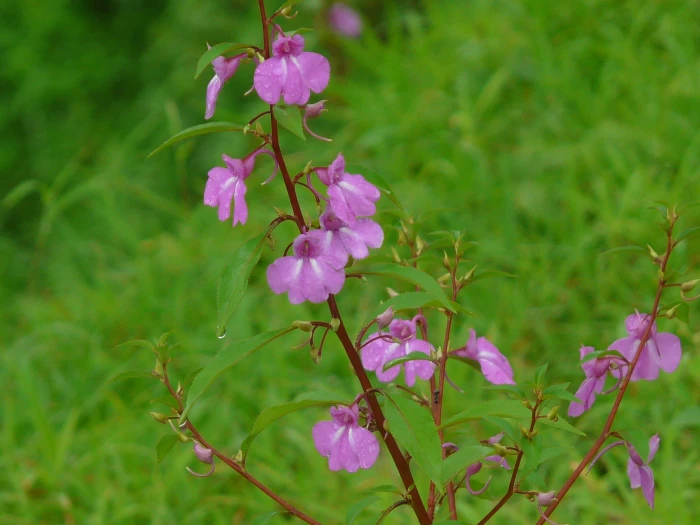Garden Balsam
(Impatiens balsamina)
Garden Balsam (Impatiens balsamina)
/
/

© Dinesh Valke
CC BY-SA 4.0
Image By:
© Dinesh Valke
Recorded By:
Copyright:
CC BY-SA 4.0
Copyright Notice:
Photo by: © Dinesh Valke | License Type: CC BY-SA 4.0 | License URL: http://creativecommons.org/licenses/by-sa/4.0/ | Uploader: dineshvalke | Publisher: iNaturalist |

























Estimated Native Range
Climate Requirements for Maywood, California
| This Plant | Your Site | Plant Suitability for Your Location | ||
|---|---|---|---|---|
| • Precipitation | 2" - 241" | 15" | Your precipitation may be insufficient for this plant. Irrigate N" / year. | Irrigate N" / year |
| • High Temp. | 56°F - 109°F | 88°F | Your summer temperatures are normal for this plant. | Excellent |
| • Low Temp. | -9°F - 75°F | 46°F | Your winter temperatures are normal for this plant | Excellent |
This plant should grow well at your location with about N inches per year (Y minutes per month) of irrigation.
Summary
Impatiens balsamina, commonly known as garden balsam, is an annual herb native to subtropical and tropical regions of South and Southeast Asia, including India and Myanmar. It typically grows to a height of 8-30 inches and has spirally arranged leaves with toothed margins. The plant features solitary, showy flowers that can be pink, red, or white, and bloom from summer to early fall. The flowers are pollinated by insects and birds, and the plant is known for its camellia-like blooms.
Garden balsam is valued for its ease of cultivation and vibrant flowers, making it a popular choice for ornamental garden beds and containers. It thrives in moist, well-drained soil and prefers full sun to part shade. While it requires regular watering, it is relatively low-maintenance once established. In traditional medicine, various parts of the plant are used to treat conditions such as warts and snakebites. However, gardeners should be cautious as Impatiens balsamina can become invasive outside its native range, and it is important to check local regulations before planting.CC BY-SA 4.0
Garden balsam is valued for its ease of cultivation and vibrant flowers, making it a popular choice for ornamental garden beds and containers. It thrives in moist, well-drained soil and prefers full sun to part shade. While it requires regular watering, it is relatively low-maintenance once established. In traditional medicine, various parts of the plant are used to treat conditions such as warts and snakebites. However, gardeners should be cautious as Impatiens balsamina can become invasive outside its native range, and it is important to check local regulations before planting.CC BY-SA 4.0
Plant Description
- Plant Type: Herb
- Height: 0.5-2.5 feet
- Width: 1.5-6 feet
- Growth Rate: Rapid
- Flower Color: Pink, Purple, Red, White
- Flowering Season: Summer, Fall
- Leaf Retention: Deciduous
Growth Requirements
- Sun: Full Sun, Part Shade
- Water: Medium
- Drainage: Medium, Slow
Common Uses
Bird Garden, Border Plant, Butterfly Garden, Hummingbird Garden, Low Maintenance
Natural Habitat
native to subtropical and tropical regions of South and Southeast Asia, including India and Myanmar
Other Names
Common Names: Garden balsam, Spotted Snapweed, Espuela De Gallo, Garten-Springkraut, Rose Balsam, Touch-Me-Not
Scientific Names: Impatiens balsamina, Balsamina balsamina, Balsamina coccinea, Balsamina cornuta, Balsamina foemina, Balsamina foeminea, Balsamina hortensis, Balsamina lacca, Balsamina minutiflora
GBIF Accepted Name: Impatiens balsamina